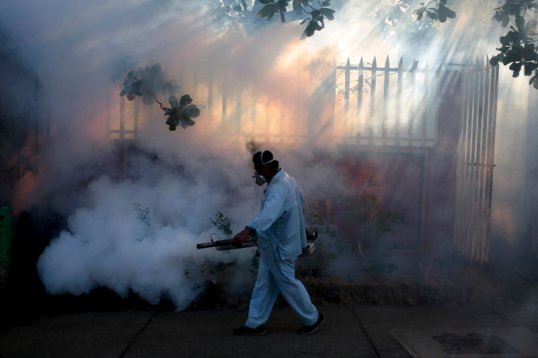
According to official reports, more than 44,000 people across Pakistan have been reported to contract dengue fever so far this year with more than 12,000 cases reported in the twin cities of Islamabad and Rawalpindi.
The surge in the dengue patient population is such that space had to be created in the surgery, ENT (Ear, Nose and Throat), eye and other specialty wards in government hospitals to accommodate the growing number of patients.
Hundreds of patients are reported to out-patient and emergency departments every day with a combination of any of the following complaints: high-grade fever, body aches, abdominal pain, vomiting and or pain behind the eyes. Keeping in mind the dengue epidemic, anyone who presented with a short history of fever was investigated on the lines of the disease.
We know by now that the dengue virus is transmitted through the bite of a specific type of a mosquito, known as the Aedes aegypti. What we do not know is that it can be easily identified through the naked eye by the characteristic white spots on its legs. It thrives in stagnant water, and is responsible for a number of diseases other than dengue fever, such as yellow fever, chikungunya, zika fever, and mayaro.
The virus is spread by the female mosquito which bites and feeds on human blood, which is used for the maturation of eggs. The mosquito is attracted to chemical compounds released by humans and other mammals such as ammonia and carbon dioxide.
Dengue fever will always be a threat to our people because of overpopulation, unhygienic living conditions and lack of a proper sanitary and drainage system. Following the monsoon season, longstanding puddles of water can be seen everywhere. This is where the dengue mosquito takes flight. It breeds in areas with standing water, including flower vases. Most worrisome are uncovered water buckets in washrooms, wet bathroom floors and toilet tanks, as these places are close in proximity to out habitats.
Two deadly complications of the dengue fever are dehydration and bleeding. The dengue virus, as it enters the human body damages the blood vessels. As a result, platelets (one of the three types of blood cells) and water leak through the damaged blood vessels. Platelets function in clotting of blood, the loss of which leads to bleeding through different parts of the body.
There is no specific anti-dengue vaccine or medicine and so the treatment revolves around restoring the water level of the body to normal with the help of ORS (oral rehydration solution) and other fluids.
As a doctor, it is hard to forget the countless patients who sat in the blue mosquito net-covered hospital beds. It is hard to forget the hundreds of patients who were tested positive for dengue every day. It is hard to forget the many lives we lost to dengue.
Almost a decade has gone by since dengue became a threat to our country. In 2011, dengue fever took more than 350 lives and this year we have lost over 60 till now. It is important to understand the burden this disease causes on healthcare and mortality, as we remain hopeful that next year the dengue virus carrying mosquito meets an improved and equipped healthcare system.
Published in The Express Tribune, November 7th, 2019.
Like Opinion & Editorial on Facebook, follow @ETOpEd on Twitter to receive all updates on all our daily pieces.

1731051730-0/BeFunky-collage-(33)1731051730-0-165x106.webp)


1731049366-0/BeFunky-collage-(31)1731049366-0-165x106.webp)









COMMENTS
Comments are moderated and generally will be posted if they are on-topic and not abusive.
For more information, please see our Comments FAQ